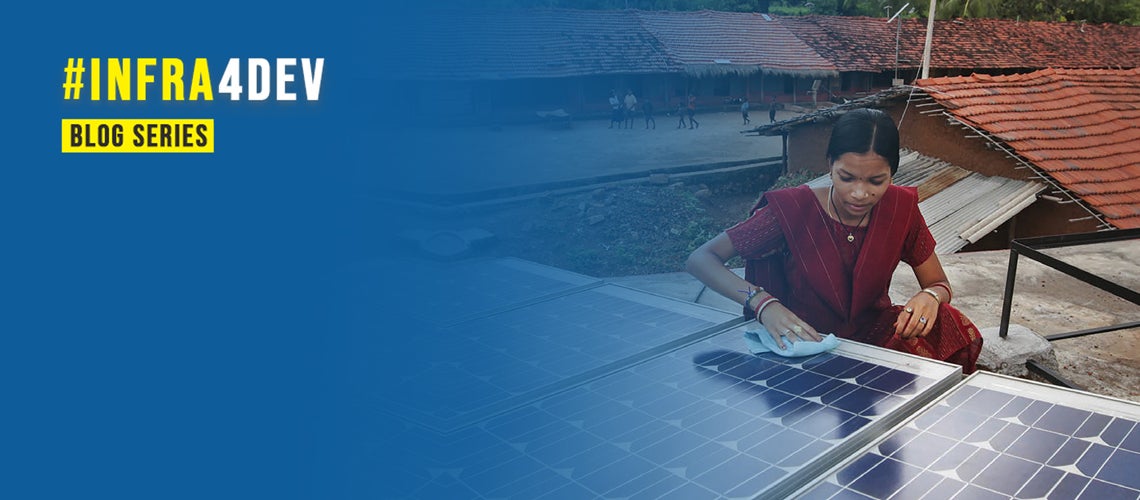 #INFRA4DEV
#INFRA4DEV
Since the 1990s, around 70% of countries across the developing world have established regulatory agencies, and enacted legislation to introduce modern regulatory frameworks for the power sector. A robust regulatory regime provides a strong foundation for improving the performance of the power sector by providing public oversight of monopolistic service providers, and in particular to ensure that prices recover efficient costs, and that acceptable quality of service is provided to customers. However, numerous case studies provide anecdotal evidence showing that the implementation of modern economic regulation remains very challenging in low- and middle-income countries, and the state of legal and institutional development remains uneven.
With the recent publication of the new Global Electricity Regulatory Index (GERI) it now becomes possible to have a much more comprehensive and nuanced understanding of the state of regulatory frameworks around the world.
What is the Global Electricity Regulatory Index?
The 2022 GERI report is produced by the Infrastructure Chief Economists Office of the World Bank, sponsored by the World Bank’s Energy Sector Management Assistance Program (ESMAP) and undertaken in partnership with the African Development Bank who provide data on African countries.
This report surveys 82 non-OECD countries from across the globe – about half in Sub-Saharan Africa and the rest across Asia, Europe, the Middle East, and Latin America. The GERI benchmarks a country’s existing regulatory system against theoretical best practice and its institutional design against the independent regulatory agency model, based on a set of standardized indicators which permit meaningful cross-country comparisons and provide the potential for progress with regulation to be tracked over time.
By measuring the adoption of regulatory best practices, GERI enables countries to identify gaps in their regulatory framework and to benchmark their performance against global peers. The GERI is scored out of 100, with a traffic light system used to classify countries according to whether scores are red (0–24%) representing a weak regulatory environment, orange (25–49%) representing an under-developed regulatory framework, yellow (50–74%) indicating a moderately developed regulatory system, and green (75–100%) suggesting a strong regulatory framework.
In 2021, the average global GERI score was 59%, indicating an intermediate stage of development of power sector regulations in developing countries with considerable room for improvement. Some of the most comprehensive regulatory frameworks were identified in Africa and Latin America, as illustrated in this map:
It is important to note that these scores reflect the regulation and processes as they appear on paper ‘de jure’ and not necessarily the way they are implemented in practice ‘de facto’. Many countries may have created sound legal frameworks due to extensive international technical assistance, however that does not necessarily mean that the regulations are being optimally implemented. In some cases, countries fail to abide by their own regulatory framework, while in others they adopt good practices that are not strictly mandated by law.
The GERI is made up of two pillars, the Regulatory Governance Index which assess the existing legal framework and the Regulatory Substance Index which assess the content of the regulation and the regulator’s institution capacity to perform its mandate.
How are countries doing in terms of regulatory governance?
The average score for the Regulatory Governance Index stood at 65%.
Lack of regulatory independence is a challenge faced in the electricity sector in almost all countries. The most widespread deficiencies under regulatory governance were on independence from stakeholders (with an average score of just 29%). Many countries lack provisions in the electricity laws to prohibit the regulatory authority head and board members from engaging in conflicts of interest.
Financial independence of regulators remains a challenge in developing countries with an average score of 59%. At the same time, incentivizing staff of regulatory authorities is difficult given that only in 31% of cases are their wages competitive with those of the utilities they regulate.
Similarly, the global score on formal independence from government was just 35%. Many countries are missing frameworks that require staggering the tenure of board members for continued leadership, institutional memory, and knowledge transfer.
How are countries doing in terms of the substance of regulation?
The average score for the Regulatory Substance Index stood at 54%. The main reason why countries do not perform very well on regulatory substance is poorly specified tariff methodologies. In particular, 75% of the surveyed countries have documented tariff methodologies, and a majority lack essential features such as automatic tariff adjustments (absent in 85% of countries) and schedules for major tariff reviews (missing in 81% of cases).
Furthermore, technical regulations are missing in many developing countries and poorly specified where available. In particular, only 50% of the countries surveyed have developed quality of service regulations, while only 48% have developed national grid codes and only 37% have developed distribution codes for their inter-connected power system.
________________
#Infra4Dev is a blog series that showcases recent World Bank economic research to explore how Infrastructure is critical for development. You can access all the previous Infra4Dev blogs here.
Subscribe here to stay up to date with the latest Energy blogs.



Join the Conversation